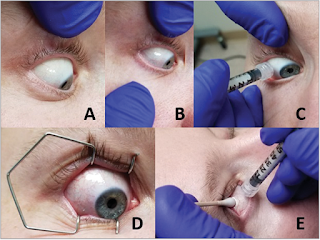Patient Pain During Intravitreal Injections Under Topical Anesthesia
Intravitreal injections involve injecting medication directly into the vitreous humour, a clear, gel-like fluid inside the eye. This method is used to treat various retina-related disorders, including diabetic retinopathy. These injections are also used to treat proliferative diabetic retinopathy (PDR), a more severe type of diabetic retinopathy marked by the formation of new, aberrant blood vessels on the retina's surface.
Intravitreal injections are the most effective and safe treatment. However, people considering intravitreal injections are concerned, mostly because they are afraid of the pain associated with eye injections. However, contrary to common belief, especially with the use of topical anesthetics, this treatment is virtually painless.
If you are considering intravitreal injection but are worried about pain, keep reading.
Intravitreal Injections Procedure
Intravitreal injections are generally painless, and you do not need to follow major precautions after the procedure.
The intravitreal injections are usually classified into two categories: anti-VEGF drugs and steroidal injections. Your eye doctor chooses the injection based on your retina’s condition and preference.
The procedure is performed in an operation theatre, where your eye doctor will apply the topical anaesthesia several minutes before the injection. These drops work by temporarily blocking pain signals from the surface of the eye. The eye is then cleansed with an antiseptic solution. A speculum is used to keep the eyelids apart. The medication is then directly injected into the eye. After giving the injection, the eye is covered with a patch for one hour, which is then removed, followed by applying antibiotic eye drops for a week.
The injection itself typically causes minimal discomfort. You might feel a slight pressure sensation, but much less pain than injections felt elsewhere on the body.
To ensure comfort and minimise pain, topical anaesthetic eye drops are applied to the eye before the injection. These drops numb the eye's surface, making the procedure painless.
What to Expect After the Procedure?
After the eye injection, you may feel some discomfort or pain. Sometimes, you may experience a subconjunctival haemorrhage, which is bleeding on the white part of the eye's surface, along with floaters, a rise in eye pressure, and eye inflammation.
However, you need not to worry because these side effects usually resolve on their own, or your doctor will prescribe eye drops to manage them. While rare, there are the chances of infections, internal bleeding of the eye, retinal tears or detachment, and the formation of cataracts. Infections after injection can cause blurred vision, swollen eyelids, discomfort, or extreme eye redness.
If you experience any of these symptoms or indications, you should consult your eye specialist in Delhi immediately.
Conclusion
While the thought of an eye injection may cause initial anxiety, the use of topical anaesthesia has made intravitreal injections tolerable and pain-free procedures. Patients should discuss any concerns with their ophthalmologist to understand the procedure and what to expect in order to make an informed decision.
If you are looking for intravitreal injections, schedule your consultation with Dr Anisha Gupta to clear your doubts.

Comments
Post a Comment